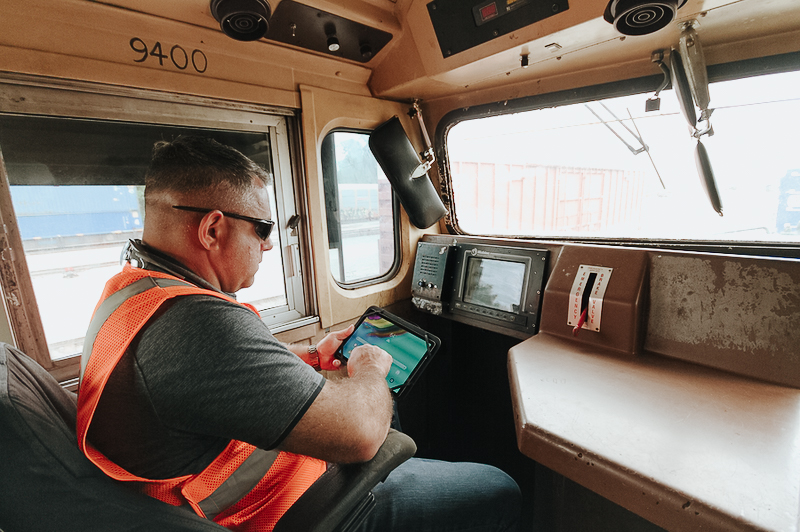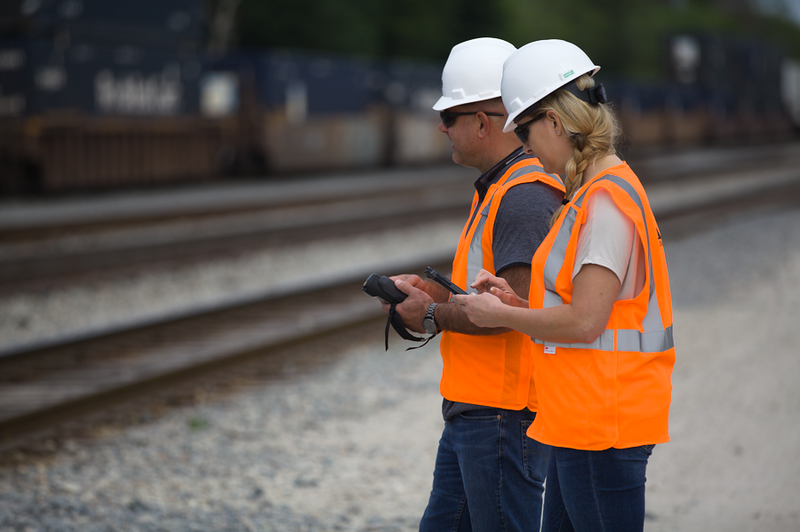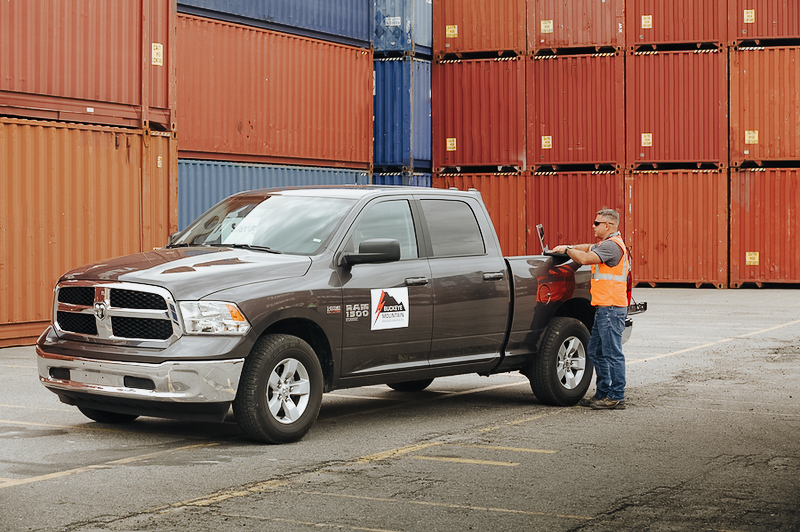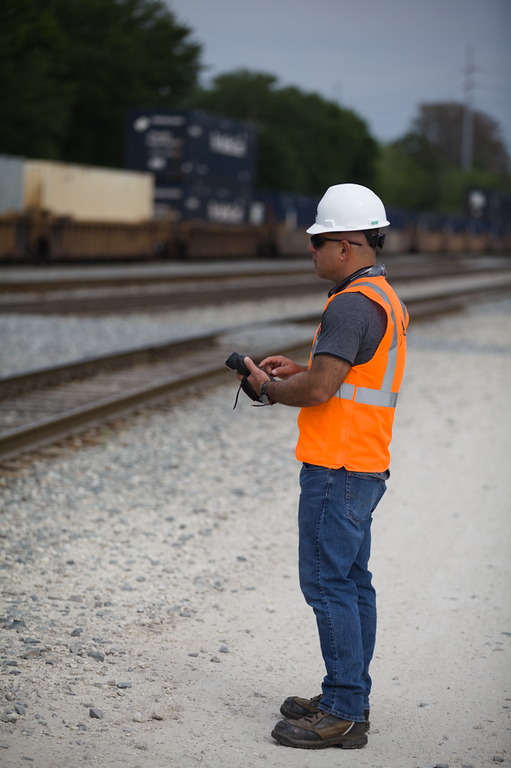Aligning Your Terminal’s Long-Term Strategic Goals with Daily Operations
Aligning Your Terminal’s Long-Term Strategic Goals with Daily Operations
For leaders at busy rail terminals, the resource requirements to keep operations moving often take priority over long-term strategic planning.
It’s easy to see why. With shipments coming and going, and inventory moving constantly —not to mention endless maintenance and repair tasks to keep equipment and infrastructure up and running—the big-picture thinking involved in strategic planning can seem irrelevant to the real work getting done on the ground.
Sticking to the status quo may not be a perfect strategy, but it gets the job done.
“Historically, the challenge has been, ‘Why fix something if it’s not broken?’” says David Fajardo, Manager of Field Technical Services at Buckeye Mountain.
But there’s a difference between “getting the job done” and “doing the job better than before.” Terminal operations may not be broken, but there’s plenty of room for improvement in rail yards and marine terminals that aren’t yet leaning on digital innovation to address pervasive issues affecting day-to-day performance.
Therein lies the importance of making space for long-term planning: While you may not see the impact of strategic thinking immediately, it can transform your operational capabilities in the near future. Successful, sustainable terminal operations require leadership to balance day-to-day responsibilities with strategy planning that is both achievable and impactful.
Think of it this way: If you continue to prioritize short-term needs over long-term goal-setting, you can expect those operational challenges to compound over time.
But striking a balance between today’s needs and tomorrow’s goals is easier said than done. That’s why we’ve created this guide to help you keep daily ops running while building toward an even more successful future.
The Operational Challenges Faced by Today’s Terminal Leaders
Operational innovation doesn’t happen overnight. It can take years to see the benefits of the strategic changes you implement tomorrow.
That long timeline underscores the importance of planning ahead. Effective digital transformation in the yard needs to be informed by the persistent challenges and limitations affecting terminal ops performance.
While every terminal is a unique environment, the operational challenges of these rail yards are often consistent from one location to the next. Here are some of the most common pain points familiar to today’s terminal leaders:
Achieving Buy-in for Strategic Initiatives Among Terminal Workers

Any terminal’s operations workforce is going to display a wide range of reactions toward the prospect of digital transformation.
Some team members will immediately see the value of getting trained on new devices and software designed to help them do their jobs better. Others will need to have the benefits of this strategic shift shown to them—including its implications for their work responsibilities and the training and upskilling they will be asked to complete.
Even then, some workers may still be hesitant to embrace change—especially if a new strategic initiative is pushing them out of their comfort zone and disrupting work routines they have relied on for years.
Terminal leaders must understand that some operations personnel will need time to accept these changes. Proper education and training are some of the best ways to ensure that your workers can properly use this technology—and will, in turn, be able to experience the benefits first-hand.
“A lot of examples of automation in the terminal can make work much easier for your personnel,” says Fajardo. “A good example is one rail terminal where ops teams are operating cranes remotely from inside a building. Instead of climbing up a crane in the middle of winter with subzero wind chills, workers can now sit in a warm office while operating the crane. It’s a significant improvement for them.”
David Fajardo, Manager of Field Technical Services at Buckeye Mountain
Failing to Maximize the Value of Third-party Training and Support
If the terminal has attempted to control costs by limiting its investment into training and in-house support, it risks a number of complications that will increase operating costs, reduce productivity, and reinforce skepticism and resistance among your employees.
Improper use of devices, increased rates of device damage, and ongoing disruptions across the rail yard all increase the overall cost of your technology investments. While terminal leaders tend to view outsourced vendor support as another line item, it can actually help reduce costs in the long run while accelerating time-to-value and the long-term ROI of your new technology.
“There’s also the issue of competition in the vendor market,” says Fajardo. “Some leadership believe they can find cheaper vendor support options elsewhere. But what sets Buckeye Mountain apart is that we offer more than a device—we offer a complete package, including the devices and the ongoing support, to give our clients peace of mind that they’ll get the most out of their technology.”
Overcoming the Constraints of Workforce Attrition
Manual terminal operations are highly dependent on the institutional knowledge offered by an experienced workforce. But today’s rail yards are facing an increase in employee attrition, particularly among more experienced technicians and employees whose expertise is impossible to replace.
New hires may be able to fill those roles, but they’re unable to supply the specialized knowledge being lost through accelerating turnover. As a result, organizations reliant on manual operations bear the cost and inefficiency of onboarding new hires who require additional training but still can’t contribute the value of their predecessors.
A tech-enabled approach, by contrast, eliminates reliance on innate industry knowledge by equipping workers with specialized tools to perform or automate even specialized tasks.
Ensuring Smooth Daily Operations at Scale
At any given moment, terminal operations teams are juggling dozens of different shipments, tasks, and other priorities. A single oversight or delay can cause a chain reaction sending a ripple of disruption through the yard.
“A lot of rail terminals, for example, have these high-priority trains called ‘Z trains’ that need to depart ASAP,” says Fajardo. “These Z train operators are a big customer for a lot of railroads, and they pay a premium to get their trains loaded and out of the terminal.”
Beyond these high-priority tasks, though, operations teams and terminal management are constantly performing triage to assess new issues and demands placed on their facility, and to determine how resources should be reallocated as a result. Managing all these moving parts was never easy with pen and paper, but the increased volume and demand placed in rail terminals has made manual ops management unfeasible and unsustainable.
Automation and other tech-enabled efficiencies are critical to keeping the rail yard from spiraling into a chaotic mess spawning unnecessary errors, delays, and customer complaints.
The Strategic Goals Driving Terminal Leaders’ Long-term Planning

Terminal leadership is well aware of the cost, disruption, and frustration that comes with unsuccessful tech adoption in the rail yard. As a result, many approach strategic planning for future tech adoption by seeking out changes that will deliver the greatest positive impact for the terminal.
The end goal of tech adoption for terminal operations is to help those facilities run smarter and more efficiently—allowing the yard to increase productivity while reducing errors and related operational downtime.
Here are two specific strategic outcomes those leaders are often seeking:
Accelerating Operations through Automation
While digital tools and automation have transformed day-to-day operations across the supply chain industry, rail terminals have been a rare exception.
But it’s not that effective digital tools don’t exist. Instead, terminals continue to rely on manual, pen-and-paper processes because they’re familiar to workers and sufficient to keep operations moving.
Rather than endure the short-term inconvenience of transitioning to new technology that helps operations run more smoothly and efficiently, it’s all too common for terminal ops personnel to stick with a status quo that is inefficient, error-prone, and quickly becoming obsolete.
“Pen-and-paper processes naturally come with a degree of human error, among other limitations,” says Fajardo. “Transitioning to a more technology-driven environment can address these issues by improving efficiency, reducing mistakes, and increasing visibility.”
David Fajardo, Manager of Field Technical Services at Buckeye Mountain
Terminal leaders are well aware of the complex daily operations that must be managed across a single yard. Each process that is executed manually, rather than with the help of digital tools and automation, represents wasted time and an increased risk of error.
When you multiply this inefficiency across every manual task performed across your yard, your day-to-day operations will inevitably suffer from work delays, workflow bottlenecks, lower productivity, and reduced revenue potential.
Improving Visibility for all Terminal Operations
These companies want better visibility into what’s happening at the terminal level. But reliable data on what’s happening on the ground is difficult to gather when most of your terminal operations are being handled with pen and paper or outdated systems.
Even when that information is able to be collected, it takes time for manual information to be consolidated, organized, and delivered to key stakeholders. The long timeline for manual reporting means that by the time information on terminal operations is delivered to corporate leaders located hundreds of miles away, the data is already outdated.
These visibility challenges disappear in a tech-enabled terminal. The data available from endpoint devices and other terminal technology can inform a 360-degree view of daily operations. Information can be gathered and analyzed quickly—potentially in real-time—to support more responsive, effective management.
Over time, this data can power faster, more effective process optimization while helping terminal leaders identify new automation opportunities across daily ops.
Connecting the Dots: Aligning Long-term Strategic Goals with Boots-on-the-Ground Operations

Day-to-day operational requirements are easy to define and straightforward to execute: technicians are deployed to address equipment needs, shipping containers are unloaded from an incoming ship or train, and assets are evaluated to ensure regulatory compliance.
As for long-term strategic planning? If you’re starting from scratch, a clean slate can be overwhelming. That’s why terminal leaders should start any strategy development process by identifying long-term goals that offer a clear benefit to your boots-on-the-ground operations.
By connecting these goals to their tangible impact in the rail yard, all stakeholders can approach strategic planning with a more tangible understanding of how these long-term changes will positively impact daily terminal ops.
Here’s how to achieve this:
1. Implement TechOps
After years of a slower tech adoption, the industry is now catching up. As a result, today’s terminals “are getting ‘tech-ified’ faster than their operations personnel can support them,” according to Ryan Swartz, Director, General Intermodal Innovation at Buckeye Mountain.
This fast rate of transformation is a potential risk to day-to-day operations, putting strategic initiatives at odds with the immediate needs of rail yards and their customers. Terminal leaders are often caught in the middle: while they may feel pressure to keep pace with the rapid innovation taking place at other rail yards, they may still be stinging from past tech adoptions gone wrong and may be wary of disruptive technological change being driven by strategic initiatives.
This friction between today’s needs and tomorrow’s ambitions is exactly why terminals need the support of a tech ops vendor. With remote support and a boots-on-the-ground presence for maintenance and other support, a tech ops partner can deliver the following operational impact:
- Complete freedom to acquire best-fit solutions. An ideal technology vendor is hardware agnostic, so you aren’t locked into choosing solutions from a limited list of hardware the vendor supports.
- 360-degree visibility across terminal operations. By consolidating hardware support with a single vendor, terminal leaders can easily manage resource allocation, streamline workflows, and coordinate support activities across the yard.
- Optimized asset utilization. At Buckeye we can expedite repairs, execute preventative maintenance, and proactively replace devices at the end of their lifespan to maximize equipment uptime and minimize disruptions to your operations.
- Enhanced efficiency across your operations workforce. Technicians and other personnel are equipped with the right tools and resources to do their jobs faster and better. Rates of human error are reduced, and daily operations become more productive thanks to streamlined, efficient workflows.
- The ability to adapt and scale your vendor support over time. As the role of technology in your terminal increases, a hardware-agnostic technology partner can scale with your support needs, providing a foundational relationship that will be there when you realize your long-term ambitions.
2. Invest in Full Lifecycle Management
The long-term value of your technology investments will be heavily influenced by how well you manage those devices over their lifecycles. It starts with making sure you’re choosing the best fit-for-purpose solutions for your yards and then securing the necessary support to maximize the lifespans and value of that technology.
But asset lifecycle management is both cost- and resource-intensive. As a result, too many terminal leaders try to get by without it—and end up suffering the results of that short-sighted decision.
One Class I railroad learned the hard way when it acquired 4,000 lower-cost Android tablets for train and engine employees across its rail network, only to realize that the devices were creating constant work disruptions that wouldn’t have existed with more expensive iPad tablets.
“It’s very hard to stay ahead of what actions need to be taken to keep operations running efficiently and evolving,” says Erica Toney, Southeast Operations Manager at Buckeye Mountain. “Devices, for example, all reach a point where their operating systems aren’t able to be upgraded, or where operational apps stop communicating with the operating system. These things can impact operations, but Buckeye really thrives in our ability to look to the future and stay ahead of those needs while maintaining operational success in the present.”
Erica Toney, Southeast Operations Manager at Buckeye Mountain
By offering cradle-to-grave management across the entire asset lifecycle, Buckeye Mountain helps you maximize the value of your technology every step of the way.
We help you procure the best-fit technologies for your operational needs and manage those investments from installation to their eventual replacement. And because we’re experts in lifecycle management, we’re able to anticipate and address potential issues with your technology before they disrupt terminal operations.
3. Consider Third-party Support and Training
An optimized approach to boots-on-the-ground operations starts with the right technology. But realizing this strategic vision requires more than picking out specialized hardware and software.
Employees need to be properly trained to use these solutions. Ongoing support will be necessary to troubleshoot issues and manage technology lifecycles.
Given the high up-front expense of new technology, terminal operators may prefer the reduced cost of a DIY approach. But handling all of this in-house can be incredibly risky to your strategic investments—and it can create additional work for technicians and other personnel at a time when they’re already stretched thin.
Ongoing third-party vendor support can help you minimize these risks, overcome common pitfalls in navigating digital transformation, and help your terminal achieve its long-term strategic goals—without compromising performance or continuity for your day-to-day operations.
How Buckeye can help with your Long-term Goals and Daily Operations

Every terminal has unique needs and goals guiding its technology investments. That’s why Buckeye Mountain tailors its technology implementations and ongoing support to each facility’s needs.
Whether you need tablets for on-site technicians and operations personnel, interactive self-service kiosks for incoming drivers, automated gate systems, rail portals, or any other technology designed for deployment in rugged terminal environments, we help supply, configure, install, and support those devices to make sure your investment is paying dividends for your daily operations.
“A lot of what we provide revolves around implementation,” says Fajardo. “Many of our terminals start with nothing—no gates, no portals, no technology in their trucks or cranes. We handle everything from start to finish. In many ways, we function as a turnkey solution and support desk for them. Without our involvement, they wouldn’t have been able to achieve the level of optimization they have today.”
Partner with Buckeye to Minimize Disruption to Your Yard
Outside vendor support ensures that all of your existing internal resources are available to support continuity in the yard. But Buckeye Mountain understands that long-term strategy execution can’t come at the expense of daily operations and your customers’ needs.
That’s why our services and support are designed to maximize equipment availability and minimize disruptions in your yard. We do this by managing everything remotely to stay physically out of terminal workers’ way. We also implement failovers to keep operations insulated from disruptions caused by severe storms or other unexpected events.
“We understand that outside the day-to-day hardware support involved in lifecycle management, there are mission-critical scenarios where operational continuity is non-negotiable,” says Toney.
From cradle to grave, we don’t only supply the technology you need to realize your strategic goals. We manage the full lifecycle to make sure you’re getting the results you expect.
The Right Technology Partner for Today and Tomorrow
Terminals are ready to boldly embrace innovation and digital change. But they can’t do it alone.
As companies struggle with attrition and the slow bleed of in-house expertise, Buckeye Mountain offers a team of industry veterans bringing critical knowledge and a knack for finding the right solutions for our customers.
We’ve built our reputation as a trusted partner solving tricky problems for our customers since day one. Looking further into 2025, we’re even better positioned to deliver solutions and support that keep our customers ahead of the technological curve.
Give your daily operations the tools it needs to succeed—and give your long-term strategy the support it needs to realize its full potential.
At Buckeye Mountain, we’ll help you do both.

